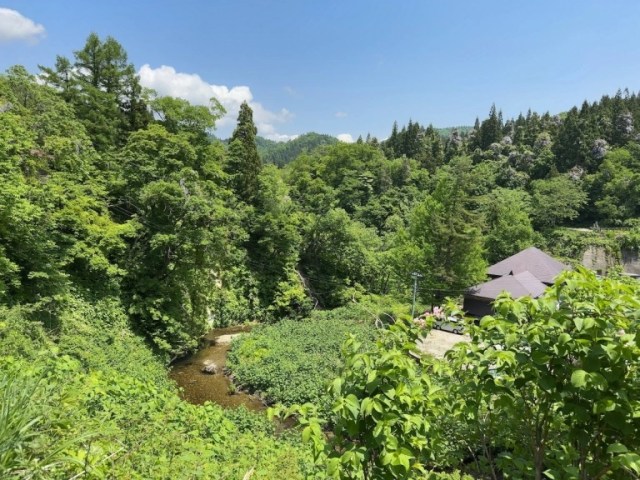
We went looking for an anime connection, and found a whole bunch of new reasons to love this Yamagata onsen town.
A lot of Demon Slayer: Kimetsu no Yaiba’s story arcs are named after the locations in which they take place. For example, the anime’s third season, which started in April, is known as the Swordsmith Village Arc and takes place in a setting with the following characteristics.
● A small, secluded village, surrounded by mountains
● Taisho period architectural styles and multi-storied pavilions
● Located near a former mine
● Became popular for the therapeutic properties of its hot spring waters, which now attract leisure bathers as well
Within the series, the location of the Swordsmith Village is a closely guarded secret, with even the members of the Demon Slayer Corps not knowing exactly where it is. Fans of the series, though, have noticed that the four points described above are also applicable to the real-world hot spring town of Ginzan Onsen, in Yamagata Prefecture.
Ginzan Onsen literally translates as “Silver Mountain Hot Springs,” and yes, there used to be a working silver mine nearby. But while there are no more precious metals being excavated these days, Ginzan Onsen still has a plentiful supply of something arguably just as valuable: hot spring water, which fills the baths at the numerous bathhouses and inns along the river that runs through the center of town.
There’s no official statement from the Demon Slayer production staff that Ginzan Onsen served as the model for the Swordsmith Village, but if you’ve been reading the manga or watching the anime, the similarities will be apparent right away. Even before visiting, our traveling Demon Slayer fan/reporter Saya Togashi had thought that the Swordsmith Village’s bridge handrails and hanging lanterns reminded her as much of a hot spring resort as a blacksmith district.
We should point out that while Ginzan Onsen is experiencing a bump in attention as Demon Slayer’s third season is airing, the town isn’t exactly a secret among travelers in Japan. Its beautiful buildings and elegant environment have made it one of the country‘s premiere onsen destinations for domestic and inbound international travelers alike.
Here’s the thing we learned on our visit, though. Ask just about anyone when they want to go to Ginzan Onsen, and they’ll say “Winter.” That’s a fine choice, too. Yamagata is one of Japan’s most northern prefectures, and the way Ginzan Onsen looks blanketed with snow on a midwinter night, bathed in the soft glow of the streetside gas lamps, is picture-perfect for posting on social media.
But you know what? Ginzan Onsen is also a wonderful place to visit in late spring/early summer.
For starters, Ginzan Onsen isn’t in a particularly train-accessible place. It’s about a 40-minute bus ride from the nearest station, so if you’re planning to skip rail travel altogether and rent a car for you and your friends, you’ll find the drive much more pleasant if you avoid the winter months, when many roads and parking lots in and around the town are closed due to the inevitably snowy weather.
But the real bonus to heading to Ginzan when the weather is warmer is that it lets you relax and enjoy your time out and about in the town itself, instead of stepping out of your hotel for a quick selfie, then scampering back inside before the winter winds chill you to the bone.
Visiting at this time of year, you’re able to appreciate how the entire center of the town feels like one gigantic strolling park. As we walked along the street, time and again we found public benches and other places to sit and rest our feet (even dipping them into free, open-air onsen foot baths on occasion) while also refreshing our spirits by gazing up at the blue sky and listening to the sound of the river flowing by.
Being able to linger longer outside without freezing, we got to pore over all sorts of beautiful architectural details, like the second-story murals here.
Another thing we’re pretty sure we wouldn’t have wanted to do on a below-freezing night: keep walking past the inns to the Ginzan no Taki waterfall, from where especially energetic visitors can even walk along some of the old trails that were used by the silver mine workers of yore.
None of this, of course, is to say that winter is a bad time to visit Ginzan. Instead, we’re saying that there isn’t any bad one, so don’t let the time of year you’re traveling in Japan convince you to scratch this beautiful place off your itinerary.
Photos ©SoraNews24
● Want to hear about SoraNews24’s latest articles as soon as they’re published? Follow us on Facebook and Twitter!
[ Read in Japanese ]

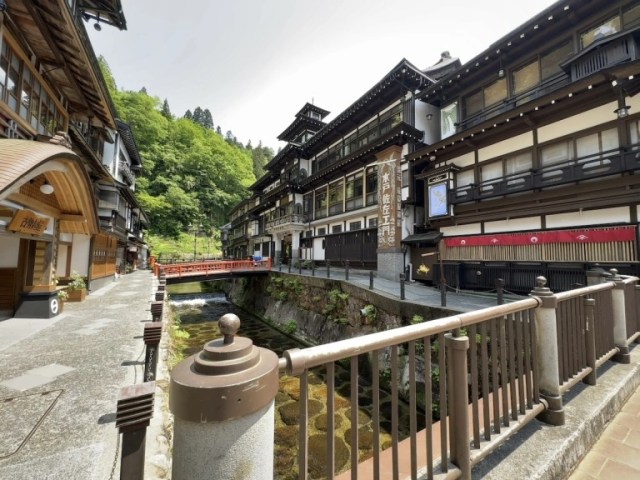

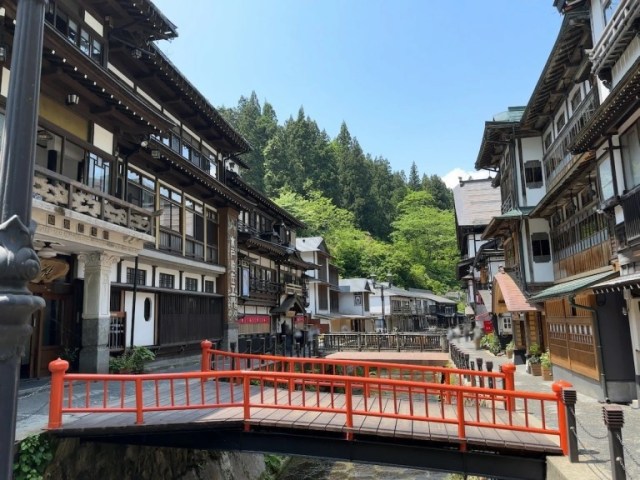
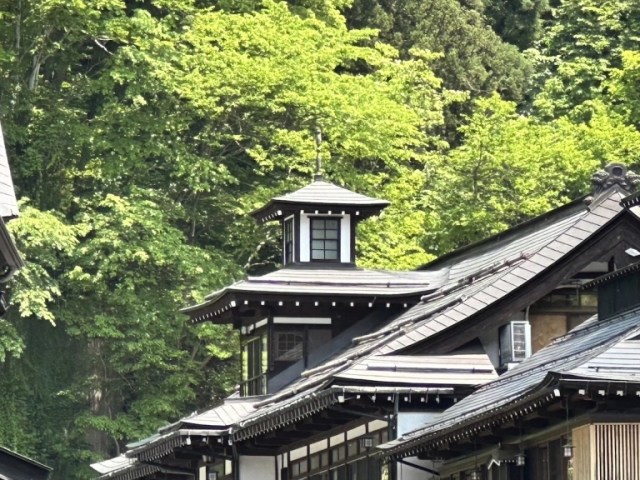
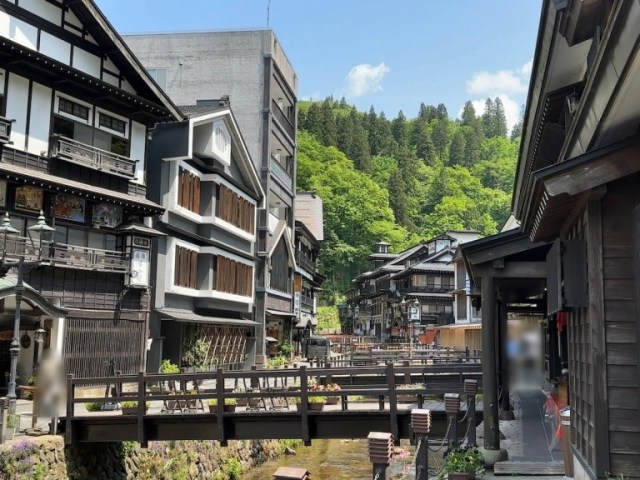
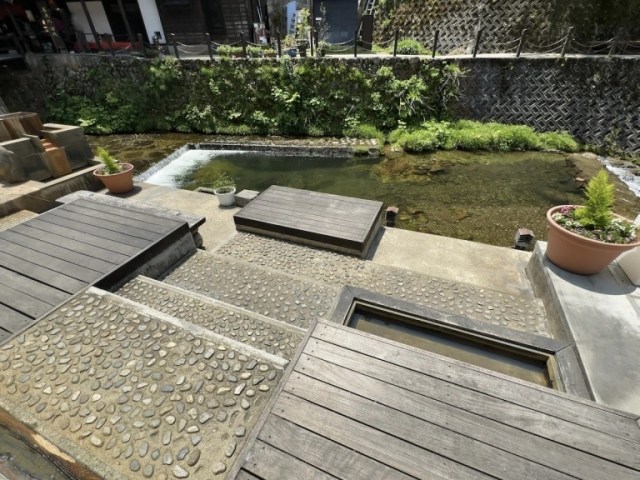
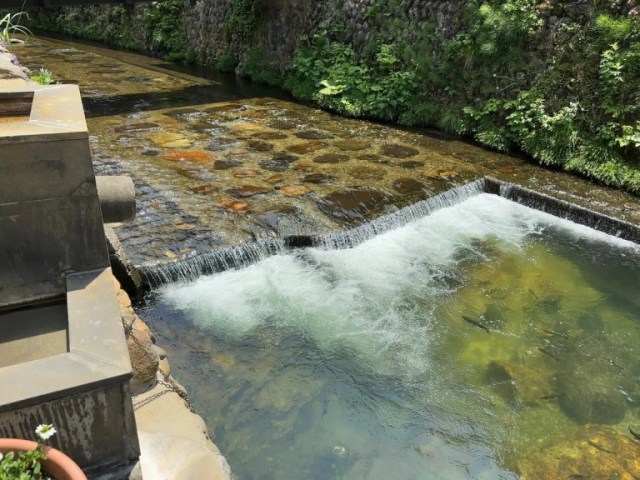
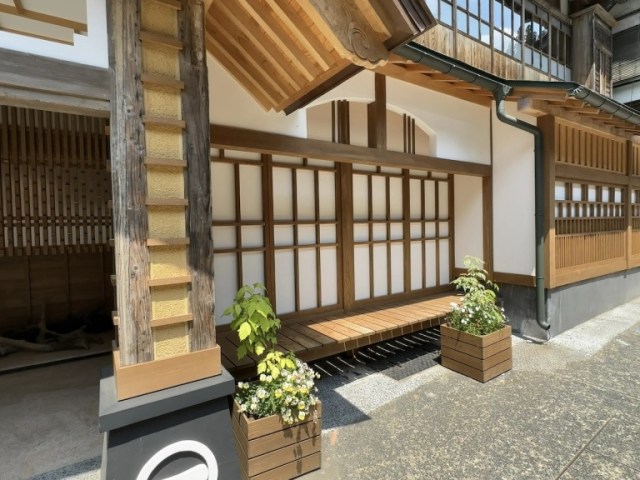
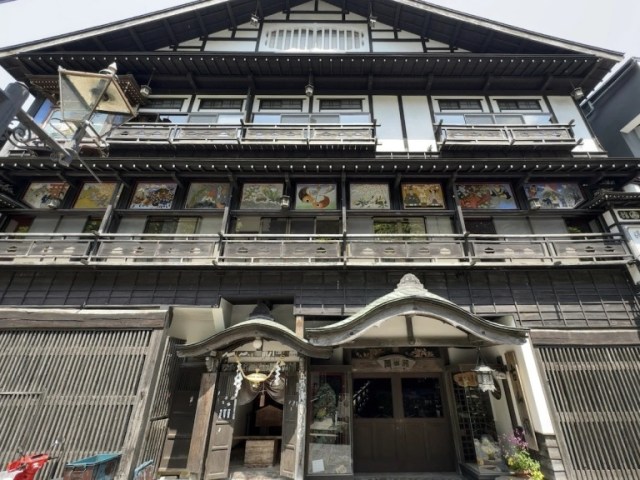
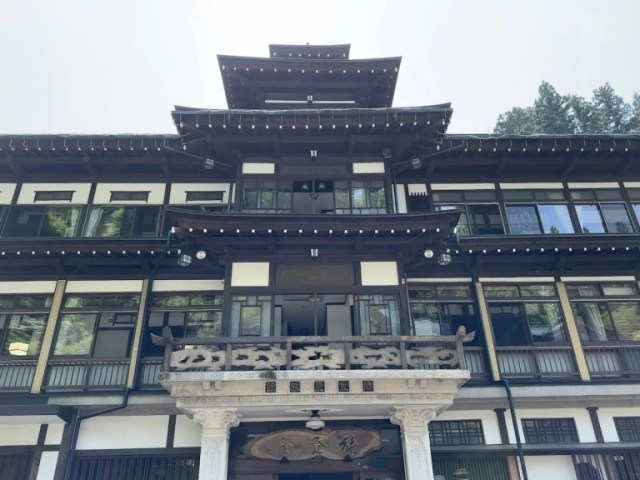
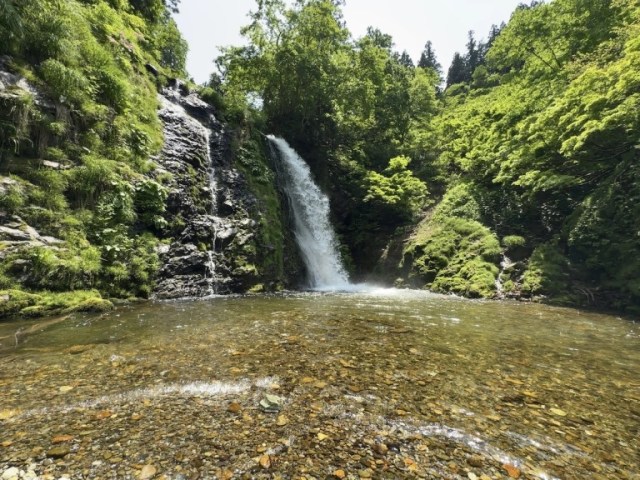
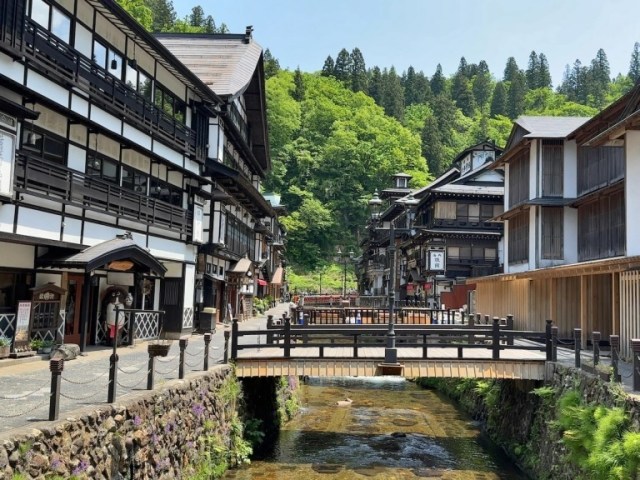
 18 awesome overnight hot spring trips from Tokyo, and a quiz to help pick the best one for you
18 awesome overnight hot spring trips from Tokyo, and a quiz to help pick the best one for you Snow falling at Ginzan Hot Spring has Twitter in awe with its otherworldly beauty 【Photos】
Snow falling at Ginzan Hot Spring has Twitter in awe with its otherworldly beauty 【Photos】 You can make your own hot spring bath at this river in central Japan【Japan travel】
You can make your own hot spring bath at this river in central Japan【Japan travel】 The 10 best hotel hot springs in Japan, as chosen by Japanese travelers
The 10 best hotel hot springs in Japan, as chosen by Japanese travelers The top five best multiple-hot-spring hotels in all of Japan
The top five best multiple-hot-spring hotels in all of Japan Seaside scenery, history, and so many desserts on Yokohama’s Akai Kutsu【Japan Loop Buses】
Seaside scenery, history, and so many desserts on Yokohama’s Akai Kutsu【Japan Loop Buses】 Do Hi-Chew-flavor Hi-Chews have a reason to exist?【Taste test】
Do Hi-Chew-flavor Hi-Chews have a reason to exist?【Taste test】 Mikado Coffee is a 76-year-old coffee chain with a major celebrity connection
Mikado Coffee is a 76-year-old coffee chain with a major celebrity connection Japan’s summertime towelket pillowcases are even better with the addition of Ghibli stars【Photos】
Japan’s summertime towelket pillowcases are even better with the addition of Ghibli stars【Photos】 Foreigner’s request for help in Tokyo makes us sad for the state of society
Foreigner’s request for help in Tokyo makes us sad for the state of society Limited-edition Carbonara Udon will anger noodle purists and pasta lovers 【Taste test】
Limited-edition Carbonara Udon will anger noodle purists and pasta lovers 【Taste test】 Sandwiches fit for a sumo served up in Osaka【Taste Test】
Sandwiches fit for a sumo served up in Osaka【Taste Test】 Harajuku Station’s beautiful old wooden building is set to return, with a new complex around it
Harajuku Station’s beautiful old wooden building is set to return, with a new complex around it Should you add tartar sauce to Japanese curry rice? CoCo Ichi makes diners an unusual offer
Should you add tartar sauce to Japanese curry rice? CoCo Ichi makes diners an unusual offer We eat at three Japanese family restaurants to find the one with the best-value breakfast
We eat at three Japanese family restaurants to find the one with the best-value breakfast McDonald’s new Happy Meals offer up cute and practical Sanrio lifestyle goods
McDonald’s new Happy Meals offer up cute and practical Sanrio lifestyle goods Japanese ramen restaurants under pressure from new yen banknotes
Japanese ramen restaurants under pressure from new yen banknotes French Fries Bread in Tokyo’s Shibuya becomes a hit on social media
French Fries Bread in Tokyo’s Shibuya becomes a hit on social media Studio Ghibli releases new action figures featuring Nausicaä of the Valley of the Wind characters
Studio Ghibli releases new action figures featuring Nausicaä of the Valley of the Wind characters Red light district sushi restaurant in Tokyo shows us just how wrong we were about it
Red light district sushi restaurant in Tokyo shows us just how wrong we were about it New private rooms on Tokaido Shinkansen change the way we travel from Tokyo to Kyoto
New private rooms on Tokaido Shinkansen change the way we travel from Tokyo to Kyoto Tokyo Tsukiji fish market site to be redeveloped with 50,000-seat stadium, hotel, shopping center
Tokyo Tsukiji fish market site to be redeveloped with 50,000-seat stadium, hotel, shopping center Beautiful Ghibli sealing wax kits let you create accessories and elegant letter decorations【Pics】
Beautiful Ghibli sealing wax kits let you create accessories and elegant letter decorations【Pics】 Japanese city loses residents’ personal data, which was on paper being transported on a windy day
Japanese city loses residents’ personal data, which was on paper being transported on a windy day Studio Ghibli releases Kiki’s Delivery Service chocolate cake pouches in Japan
Studio Ghibli releases Kiki’s Delivery Service chocolate cake pouches in Japan New definition of “Japanese whiskey” goes into effect to prevent fakes from fooling overseas buyers
New definition of “Japanese whiskey” goes into effect to prevent fakes from fooling overseas buyers Our Japanese reporter visits Costco in the U.S., finds super American and very Japanese things
Our Japanese reporter visits Costco in the U.S., finds super American and very Japanese things All-you-can-drink Starbucks and amazing views part of Tokyo’s new 170 meter-high sky lounge
All-you-can-drink Starbucks and amazing views part of Tokyo’s new 170 meter-high sky lounge More foreign tourists than ever before in history visited Japan last month
More foreign tourists than ever before in history visited Japan last month New Pokémon cakes let you eat your way through Pikachu and all the Eevee evolutions
New Pokémon cakes let you eat your way through Pikachu and all the Eevee evolutions Disney princesses get official manga makeovers for Manga Princess Cafe opening in Tokyo
Disney princesses get official manga makeovers for Manga Princess Cafe opening in Tokyo Sales of Japan’s most convenient train ticket/shopping payment cards suspended indefinitely
Sales of Japan’s most convenient train ticket/shopping payment cards suspended indefinitely Sold-out Studio Ghibli desktop humidifiers are back so Totoro can help you through the dry season
Sold-out Studio Ghibli desktop humidifiers are back so Totoro can help you through the dry season Japanese government to make first change to romanization spelling rules since the 1950s
Japanese government to make first change to romanization spelling rules since the 1950s Ghibli founders Toshio Suzuki and Hayao Miyazaki contribute to Japanese whisky Totoro label design
Ghibli founders Toshio Suzuki and Hayao Miyazaki contribute to Japanese whisky Totoro label design Doraemon found buried at sea as scene from 1993 anime becomes real life【Photos】
Doraemon found buried at sea as scene from 1993 anime becomes real life【Photos】 Tokyo’s most famous Starbucks is closed
Tokyo’s most famous Starbucks is closed One Piece characters’ nationalities revealed, but fans have mixed opinions
One Piece characters’ nationalities revealed, but fans have mixed opinions We asked a Uniqlo employee what four things we should buy and their suggestions didn’t disappoint
We asked a Uniqlo employee what four things we should buy and their suggestions didn’t disappoint Princesses, fruits, and blacksmiths: Study reveals the 30 most unusual family names in Japan
Princesses, fruits, and blacksmiths: Study reveals the 30 most unusual family names in Japan New onsen facility in the heart of Tokyo’s business district to be ready for Olympics
New onsen facility in the heart of Tokyo’s business district to be ready for Olympics The top 10 hot springs Japanese travelers want to visit this fall
The top 10 hot springs Japanese travelers want to visit this fall Japan’s most famous hot spring resort runs ad telling us to go to…a different hot spring resort
Japan’s most famous hot spring resort runs ad telling us to go to…a different hot spring resort Rakuten Travel reveals the top 5 best-rated, off-the-beaten-track Japanese ryokan inns
Rakuten Travel reveals the top 5 best-rated, off-the-beaten-track Japanese ryokan inns This hotel has one of the coolest katana collections in Japan, and admission is totally free【Pics】
This hotel has one of the coolest katana collections in Japan, and admission is totally free【Pics】 Learn all about enjoying a traditional Japanese-style ryokan inn from this nine-minute video!
Learn all about enjoying a traditional Japanese-style ryokan inn from this nine-minute video! We go looking for the free kaoyu hot spring facebath of onsen town Kusatsu【Photos】
We go looking for the free kaoyu hot spring facebath of onsen town Kusatsu【Photos】 Free literal forest bathing in Hokkaido is a hot spring experience you’ll never forget【Photos】
Free literal forest bathing in Hokkaido is a hot spring experience you’ll never forget【Photos】 Hot spring in Gunma Prefecture found to reduce COVID-19 infectivity by over 90 percent
Hot spring in Gunma Prefecture found to reduce COVID-19 infectivity by over 90 percent Love Japanese hot springs? At Nakadake Onsen in Hokkaido, you can dig your own!
Love Japanese hot springs? At Nakadake Onsen in Hokkaido, you can dig your own! Ridiculously powerful hot spring bath in Japan earns both our respect and our fear【Videos】
Ridiculously powerful hot spring bath in Japan earns both our respect and our fear【Videos】 Onsen in Japan uses the same mysterious hot spring bathing system from Ghibli film Spirited Away
Onsen in Japan uses the same mysterious hot spring bathing system from Ghibli film Spirited Away New Suntory beer cans feature 15 different Shinkansen bullet trains and local landscapes
New Suntory beer cans feature 15 different Shinkansen bullet trains and local landscapes Got tattoos, but still want to experience a Japanese hot spring? It’s no problem here!
Got tattoos, but still want to experience a Japanese hot spring? It’s no problem here! This gorgeous hot spring is actually part of one of Japan’s most convenient airports【Photos】
This gorgeous hot spring is actually part of one of Japan’s most convenient airports【Photos】 Onsen town’s 4K video has visitors lining up around the virtual block【Video】
Onsen town’s 4K video has visitors lining up around the virtual block【Video】
Leave a Reply